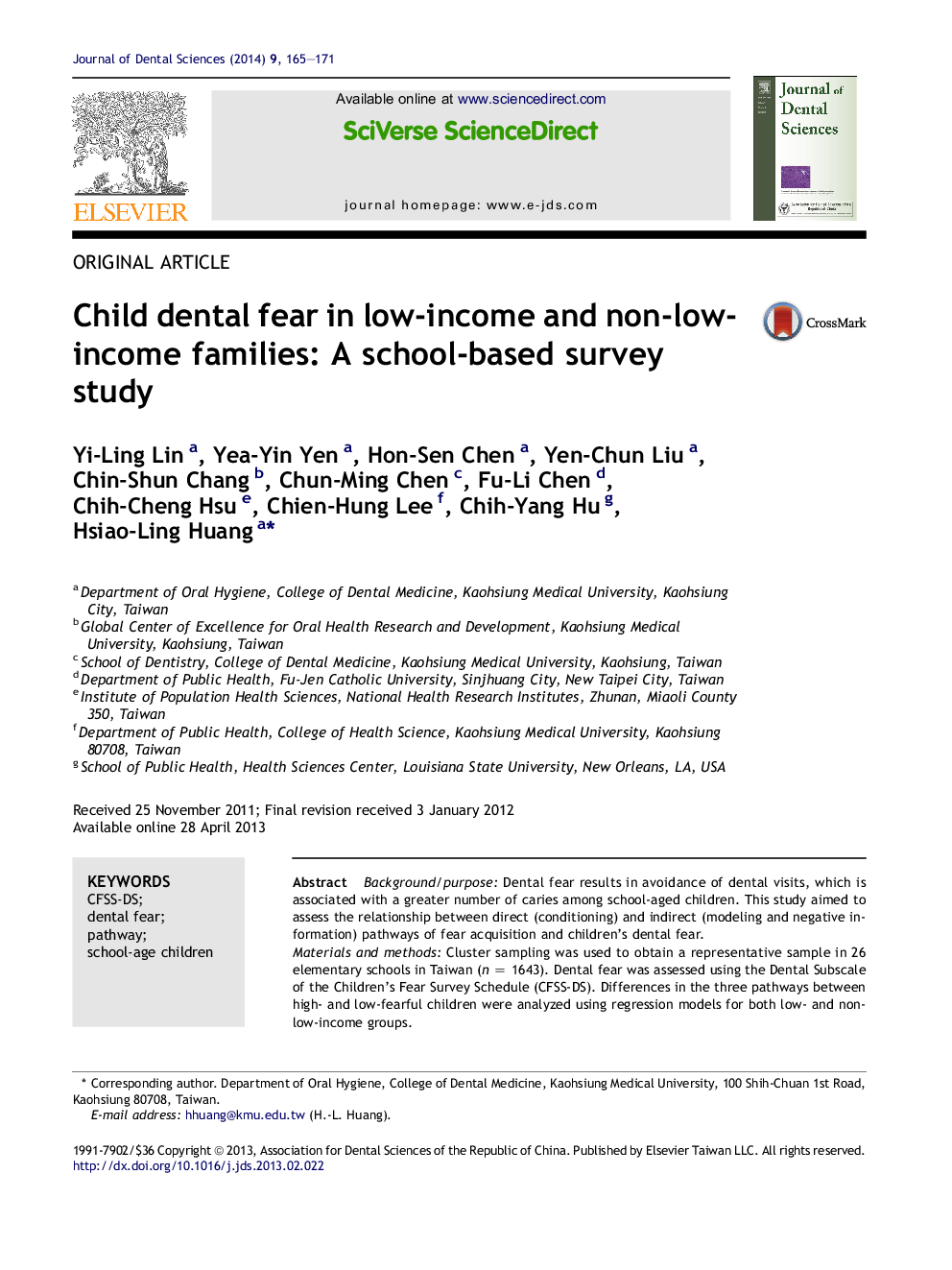| Article ID | Journal | Published Year | Pages | File Type |
|---|---|---|---|---|
| 3144712 | Journal of Dental Sciences | 2014 | 7 Pages |
Background/purposeDental fear results in avoidance of dental visits, which is associated with a greater number of caries among school-aged children. This study aimed to assess the relationship between direct (conditioning) and indirect (modeling and negative information) pathways of fear acquisition and children's dental fear.Materials and methodsCluster sampling was used to obtain a representative sample in 26 elementary schools in Taiwan (n = 1643). Dental fear was assessed using the Dental Subscale of the Children's Fear Survey Schedule (CFSS-DS). Differences in the three pathways between high- and low-fearful children were analyzed using regression models for both low- and non-low-income groups.ResultsThe children's CFSS-DS scores revealed differences between the low-income and non-low-income groups (P < 0.05). Significant factors associated with high dental fear in low-income children were modeling [odds ratio (OR) 6.48] and conditioning (OR 2.45), whereas conditioning (OR 5.84), modeling (OR 2.03), and information (OR 3.01) were associated with high dental fear in non-low-income children. Modeling explained 18% of the variance in CFSS-DS scores in low-income children, and conditioning explained 25% of the variance in non-low-income children.ConclusionPrevious negative dental experiences learned by children or from others were found to be associated with children's dental fear. The findings suggest that pediatric dentists attempting by gentle care to reduce children's level of dental fear at their first dental visit may have a positive influence.
